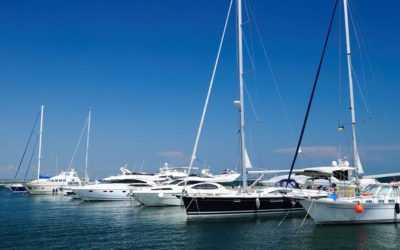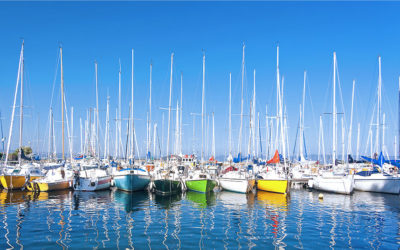Summary
1 – The Coastal License
2 – The Offshore License
3 – What if I’m navigating abroad?
1. The Coastal License
The coastal license, more formally known since 2008 as the “coastal pleasure craft license,” is a sea navigation credential. It allows you (age 16 or over) to operate a motorized pleasure craft with a motor greater than 6 HP (4.5 KW). No maximum power limit applies. With this license, then, you can operate a motor boat with 6 HP, 250 HP… even 500 HP or more! There’s no limit on size, either; whether your boat is 7 or 70 meters long, the license is the same. It also allows for the use of Vhf radio in French waters, navigation on lakes and confined bodies or water, and the use of a jet-ski.
With the coastal license, you can travel as far as 6 miles from the nearest shelter. What is a shelter? Shelter is defined as any protected location where you, your boat, and your crew could take refuge in the event of a sea swell, storm, etc. A shelter could be a port, a cove, an island, or even your own boat, if you are using its dinghy. That definition of shelter can, in some cases, allow for actual distance of 12 miles from shore. Indeed, if there is a port or island 12 miles away from your port of origin, you can get there, because when you are halfway there, you’ll be 6 miles from both your point of origin and your destination!
2. The Offshore License
If you wish to navigate farther than 6 miles from a shelter, the coastal license is no longer sufficient. You’ll need to obtain an offshore extension, commonly called the offshore license. As its name suggests, this is an extension of the coastal license; therefore, you are required to get your coastal license first. With this extension, there are no limitations on distance; you’re free to cross the Atlantic!
However, obtaining your offshore license isn’t simply a matter of distance. It also ensures that you have solid maritime skills: reading a nautical chart, predicting tides, and accounting for currents, winds, and magnetic declination – all with a paper map, compass, and ruler! With this extension, you’ll be able to navigate even if your electronic instruments fail. You’ll learn traditional, more scientific skills than those associated with the coastal license. While the coastal license exam consists of 30 multiple-choice questions administered electronically and a practical test, the offshore license exam is another matter altogether. Dealing exclusively with theory, it consists of one navigation exercise using a day map, a second navigation exercise with a night map (90 minutes in all), tide calculation, and 5 multiple-choice questions about electronic aids, weather, and security equipment. A welcome challenge!
3. What if I’m navigating abroad?
The coastal and offshore licenses are French pleasure craft permits, and the rights they confer remain valid in foreign waters if you are operating a boat under the French flag. If you are navigating a foreign vessel abroad, you will need to obtain information from the authorities of the countries in question.
Be aware that, in France, you are subject at all times to inspection by Maritime Affairs, the coast guard, and Customs, although it is the case that inspections are most common during the high season. Infractions may lead to punishments including suspension or revocation of your license in the event of severe negligence compromising personal safety (excessive speed, for example), failure to comply with regulations (for example, the Navigation Code), or inebriation or consumption of narcotics.
You could also be fined for operating a vessel without a license (€1500), operating a vessel with a suspended license (€1500), accompanied operation of a vessel without prior declaration (€150), exceeding the deadline for production of requested administrative documents (€750).

